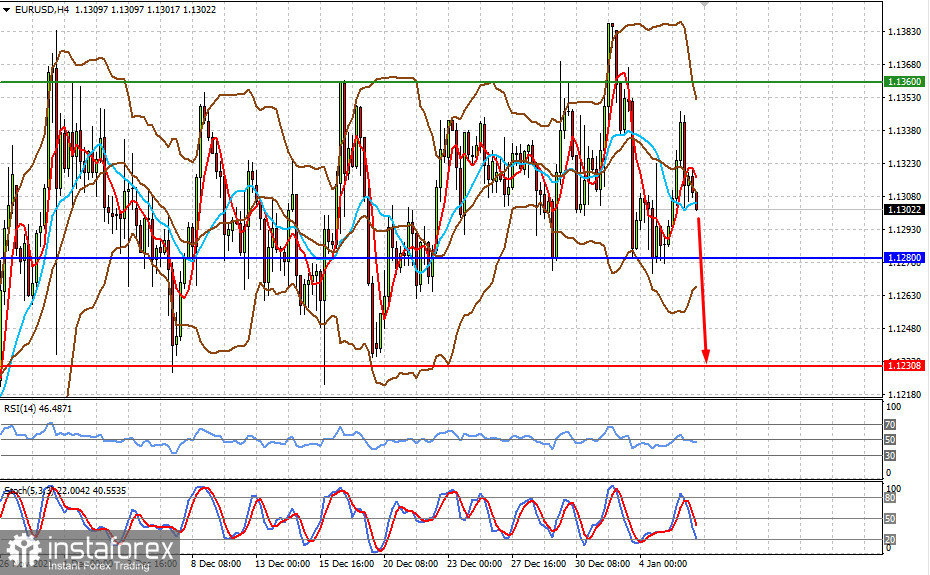The Christmas rally come to its end and investors are now fully focused on the Fed's monetary policy action, which will undoubtedly remain in the spotlight and have a visible impact on the dynamics of the financial markets.
A clear signal to investors was yesterday's publication of the minutes of the Fed's December monetary policy meeting, which led to the collapse of the US stock market, contributing to the growth of Treasury yields and supporting the rate of the US dollar.
Optimism was shed on the markets after the publication of ADP data on the number of new jobs in December, which showed significantly higher job growth of 807,000 against the forecast of 400,000. This manifested in the increase in US stock indices and the weakening of the US dollar, but the release of the minutes of the meeting led to a sharp drop in indices, and an increase in Treasury yields, as well as in the US dollar.
Why did the markets behave this way?
It can be recalled that earlier, there was an opinion in the markets that the Fed would raise interest rates this year, most likely around the middle, which allowed investors to have a time lag for buying risky assets. It also held back the sell-off in the government debt market and prevented a noticeable strengthening of the US dollar. However, the content of the minutes showed that concern about strong inflation is forcing the Fed to act more actively in the field of reducing the volume of asset repurchases and, possibly, an earlier start of the process of raising interest rates. In fact, the markets have come to realize what was mentioned earlier in November and December – an increase in the risk of an earlier increase in interest rates. We assumed that the regulator could start raising them in February or March, namely in the first quarter. And apparently, the market is now dominated by the opinion that this will happen in March. The market lost a time lag, which was the reason for the profit-taking and manifested itself in a fall in stock indices and a strong rise in Treasury yields. However, the US dollar's strengthening was not so strong.
Amid the dramatic changes in the timing of growth in rates, market participants will look forward to the publication of inflation data for December with even greater impatience. If they show a continuation of increasing pressure, then the assumed first rate hike in March will most likely happen, which will stimulate all the movement in the markets described above. But if we witness its weakening, which is not ruled out, then the expectation of a rise in the cost of borrowing in the first quarter of this year may move again closer to the middle of the year. In this case, risky assets will begin to be in demand again. Treasury yields will decline, and the dollar rate will moderately correct downward.
So, the trigger for strong movements in the markets will be the release of US inflation data, which must be taken into account.
Forecast of the day:
The EUR/USD pair remains in the range of 1.1230-1.1360. If the mood in the market continues to deteriorate, the pair is likely to further decline towards the level of 1.1230.
A similar picture can also be observed in the dynamics of spot gold. A price decline below the level of 1797.30 could stimulate a further fall to 1761.25.


 English
English 
 Русский
Русский Bahasa Indonesia
Bahasa Indonesia Bahasa Malay
Bahasa Malay ไทย
ไทย Español
Español Deutsch
Deutsch Български
Български Français
Français Tiếng Việt
Tiếng Việt 中文
中文 বাংলা
বাংলা हिन्दी
हिन्दी Čeština
Čeština Українська
Українська Română
Română

